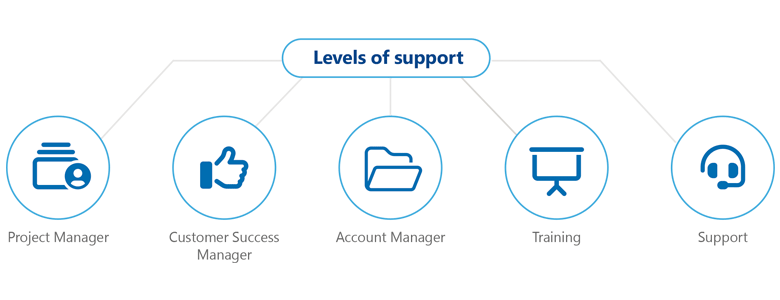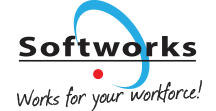Employee time and attendance tracking has traditionally been a manual process, involving everything from paper timecards and mechanical punch clocks to complex spreadsheet entries. It’s a tale as old as time – in a previous blog post, we discussed the findings of a 3200 year old tablet that documented hours worked and absences!
While tracking time and attendance on spreadsheets or manually was once considered best-in-class, it is now out of date and can lead to a loss of productivity, time and not to mention money through time theft, buddy punching or the incorrect calculation of hours worked or overtime earned.
Today, software and AI tools exist to make tracking time and attendance a much easier process. This is having a massive impact on how organizations are empowering their workforce. This new approach not only enhances accuracy and reduces the administrative workload but also provides real-time insights into workforce dynamics.
Is tracking time and attendance worth it?
The shift from manual methods to automated systems is a critical development in the management of employee time and attendance. Historically, manual tracking was fraught with issues, from the labor-intensive nature of the tasks to frequent human errors that could affect everything from payroll to employee morale.
Automation has become critical for several reasons:
- Accuracy and Reliability: Automated systems reduce the potential for human error in recording and calculating work hours, leading to more accurate payroll processing and compliance with labor regulations. One EY paper puts the frequency of time and attendance errors at 1,139 errors per 1000 employees – meaning per year this happens more than once per employee per year. The resulting cost to businesses is $248,735. Outside of this, the second highest cost associated with time and attendance was for incorrect processing of vacation, paid time off or sick leave requests. This resulted in 721 errors per 1000 employees at a total cost of $219,289 for employers.
- Enhanced Efficiency: By streamlining the data entry and reporting processes, automation frees up time for HR and management teams to focus on more strategic initiatives rather than repetitive administrative tasks. Which let’s face it – makes the working day more enjoyable for everyone! A study shows that companies can save up to 7 hours per week per employee in HR and payroll management by switching to automated systems.
- Scalability: As organizations grow, the demands on time and attendance systems grow too. Automated solutions can easily expand to handle increased complexity and larger volumes of data without sacrificing performance. Something an email inbox or an excel spreadsheet would struggle with!
- Streamlining processes: Automation directly feeds accurate work-hour data into payroll systems, eliminating the need for manual calculations and data transfers. This integration ensures that employees are paid correctly and on time, reducing the likelihood of payroll errors that can lead to employee grievances and financial discrepancies. Automated alerts can also notify managers of any anomalies or discrepancies in time records before they impact payroll, facilitating prompt corrections.
- Access to Real-Time Information: With automated tracking management gains the ability to view real-time data on employee attendance and labor patterns, enabling proactive management through forecasting and analytics.
- Regulatory Compliance: Keeping accurate and readily accessible records is easier with automation, helping businesses stay compliant with evolving labor laws and minimizing the risk of legal penalties.
These factors underscore the importance of automation in refining employee time and attendance tracking processes, ensuring businesses operate more smoothly and are well-prepared to meet both current and future challenges.
Direct Benefits to Employees
Improved Employee Experience
Automated time and attendance systems often come with user-friendly employee self-service interfaces that empower employees to manage their own time records. They can easily check their hours worked, submit time-off requests, and view their schedule all from their own phone if they’d like. This level of transparency and control improves employee satisfaction and engagement, as employees feel more trusted and involved in their own time management. On some Workforce Management systems (like ours!) employees can even state their preferred working hours so managers can take that into account.
Self-Service Capabilities and Empowerment
Automated systems grant employees access to employee self-service portals where they can efficiently manage their own attendance data. This allows them to view work hours, submit time-off requests, and rectify inaccuracies, fostering a sense of control and involvement in their work life. Something we’ve found in Softworks HQ is that our clients love the flexibility of having the self-service application. If employees want to take on some overtime shifts, they can be offered out via push notifications and they can apply via the app.
Improved Employee Experience and Satisfaction
Workforce Management systems significantly enhance accuracy in time tracking, reducing payroll errors and discrepancies. This ensures that employees are paid correctly and on time, which is definitely a win-win for everyone. This results in trust in management being strengthened, enhanced job satisfaction and a positive working environment.
Implementing Automated Time and Attendance Systems
Successfully integrating an automated time and attendance system into your business involves careful planning and strategic execution. Here’s how you can effectively implement these systems to ensure minimal disruption and maximum benefit.
1. Assessing Your Needs and Planning
Before introducing any new technology, it’s crucial to thoroughly evaluate your existing processes to understand what works and what doesn’t. Identify specific pain points, such as bottlenecks in data entry or frequent payroll errors, that automation could resolve. Define clear objectives for automation, like reducing approval time or improving record accuracy, which will guide your choice of system and implementation strategy.
2. Selecting the Right Technology Partner
Choosing the right software provider is pivotal. Look for providers who not only offer technology that fits your specific needs but also provide robust support and integration services. Criteria to consider include:
- Compatibility with your existing systems
- Scalability to grow with your business
- User-friendly interface that your staff can easily adopt
- Compliance features that adhere to your industry’s regulations
- Proven track record and positive customer reviews
3. Rolling Out New Systems
When deploying new technology, it’s best to take a phased approach. Start by running a pilot program with a small group of users to identify potential issues and gather feedback. Use this information to make necessary adjustments before a full-scale rollout. At Softworks, we offer a gold standard of support – we guide you through a five layer implementation and support process and ensure that you are comfortable with the system on an administrator, manager and employee level before going live.

During the rollout, maintain clear communication with all stakeholders about the changes and provide comprehensive training to ensure everyone is confident in using the new system. Address any resistance by highlighting the benefits, such as reduced workload and improved accuracy.
Implementing an automated time and attendance system can seem daunting, but with careful planning, the right partners, and a strategic rollout, it can significantly enhance the efficiency and accuracy of your workforce management.
Conclusion
Implementing automation in employee time and attendance tracking significantly enhances operational efficiency and accuracy. Despite some initial challenges, the advantages of automated systems—such as reduced administrative work, improved accuracy, and better employee satisfaction—are substantial.
As your business looks to optimize operations and stay competitive, adopting automation in time tracking is not just beneficial; it’s essential. Automated systems provide real-time data that supports informed decision-making and ensures compliance with evolving labor laws.
Take the first step toward a more efficient and compliant workplace. Request a demo of Softworks Automated Time and Attendance Software, and see how it can transform your workforce management. Embrace innovation, and let your business thrive.









